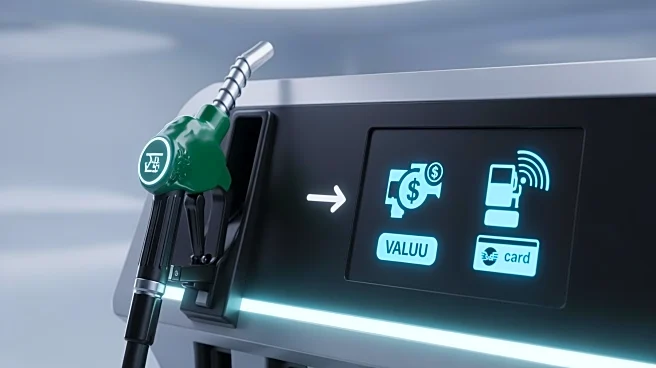What's Happening?
Fuel cards, once a staple for customer loyalty in the oil industry, are experiencing a significant decline in usage. According to an analysis by Upside, the share of fuel card transactions fell from 1.5%
to 0.9% between 2022 and 2025, marking a 42% decrease. Similarly, the revenue share from fuel cards dropped from 2.5% to 1.5%, a 41% decline over the same period. This shift is attributed to changing consumer behavior, where buyers are increasingly price-sensitive and less attached to specific brands. The analysis highlights that 74% of fuel customers are considered 'uncommitted,' visiting a station less than once a month, and 65% of new customers churn after their first month of visits.
Why It's Important?
The decline in fuel card usage reflects broader changes in consumer loyalty and payment preferences. As consumers prioritize value over brand loyalty, businesses in the fuel industry must adapt to these evolving preferences to maintain customer retention. The shift towards value-seeking behavior indicates that traditional loyalty programs and branded credit cards may no longer be effective in driving repeat business. This trend could impact the financial strategies of fuel retailers, prompting them to explore new methods to engage and retain customers, such as dynamic, data-driven approaches that reward real consumer behavior.
What's Next?
Fuel retailers may need to innovate their loyalty strategies to cater to the modern consumer. This could involve leveraging digital platforms and data analytics to offer personalized value propositions that align with consumer expectations for convenience and quality. As the industry adapts, there may be increased investment in technology-driven solutions that enhance customer experience and foster loyalty beyond traditional credit card programs. Retailers who fail to evolve may risk losing market share to competitors who better understand and meet the needs of the uncommitted customer.
Beyond the Headlines
The decline in fuel card usage underscores a potential shift in the broader retail landscape, where static loyalty programs are being replaced by more flexible, consumer-centric models. This evolution may lead to a reevaluation of how businesses across various sectors approach customer engagement and retention, emphasizing the importance of understanding consumer behavior through data-driven insights.











